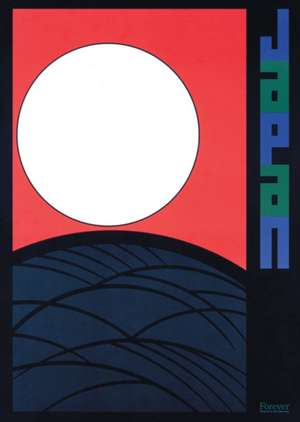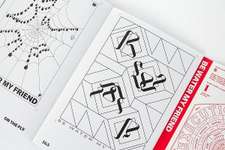Contemporary Japanese Posters
Autor Gian Carlo Calzaen Limba Engleză Hardback – 28 oct 2021
Yusaku Kamekura was born in Kanbara in 1915. He is considered to be the figure who contributed most to the spread of Japanese graphic design in the post-WWII period. He graduated with a degree in architecture and industrial arts in 1933; in 1940, he became the director of Nippon Kobo and in 1949 he was appointed artistic director of the magazine Commerce Japan. His most important designs, including the posters for the 1964 Olympic Games, the 1970 Osaka Expo, the Hiroshima Appeals, and the logo for the Nippon Telegraph and Telephone Corporation, all made a significant contribution to increasing his fame.
Shin Matsunaga was born in 1940 in Tokyo. After graduating in 1964 from the department of design at Tokyo National University of Fine Arts and Music, he joined the advertising division at Shiseido. He designed the PEACE ¿86 poster and curated all the graphic design for the Sezon Museum of Modern Art. He also designed the symbol and official poster for the 1989 Pan-Pacific Design Congress, the human rights poster commemorating the 200th anniversary of the French Revolution, the medal for Mint¿s 120th anniversary, the logo for Issey Miyake and RHIGA Royal Hotels, and the package design for the French cigarette brand Gitanes Blondes (1995).
Film director and art director Nagi Noda was born in Tokyo and made a name for herself as one of the most important young Japanese designers. She first achieved fame as an art director, designing publicity for the print media and graphics for publishing and the music industry, before working for bigger clients such as Nike and the Laforet Harajuku department stores. Ikko Tanaka was born in 1930 in Nara. In 1950, at just 19 years old, he graduated from the Kyoto City School of Fine Arts (now the Kyoto University of Arts) and immediately afterwards started working for companies such as the Kanegafuchi textiles company and the Sankei Shinbun daily newspaper. He designed the signage and medals for the 1964 Tokyo Olympics and the pavilion dedicated to Japanese history at the 1970 Osaka Expo.
Preț: 315.03 lei
Preț vechi: 358.81 lei
-12% Nou
Puncte Express: 473
Preț estimativ în valută:
60.29€ • 62.58$ • 50.27£
60.29€ • 62.58$ • 50.27£
Carte disponibilă
Livrare economică 01-15 martie
Livrare express 18-22 februarie pentru 160.61 lei
Preluare comenzi: 021 569.72.76
Specificații
ISBN-13: 9788857245782
ISBN-10: 8857245780
Pagini: 519
Ilustrații: 700 Illustrations, unspecified
Dimensiuni: 216 x 304 x 42 mm
Greutate: 2.26 kg
Editura: Thames & Hudson
Colecția Editions Skira Paris
ISBN-10: 8857245780
Pagini: 519
Ilustrații: 700 Illustrations, unspecified
Dimensiuni: 216 x 304 x 42 mm
Greutate: 2.26 kg
Editura: Thames & Hudson
Colecția Editions Skira Paris













